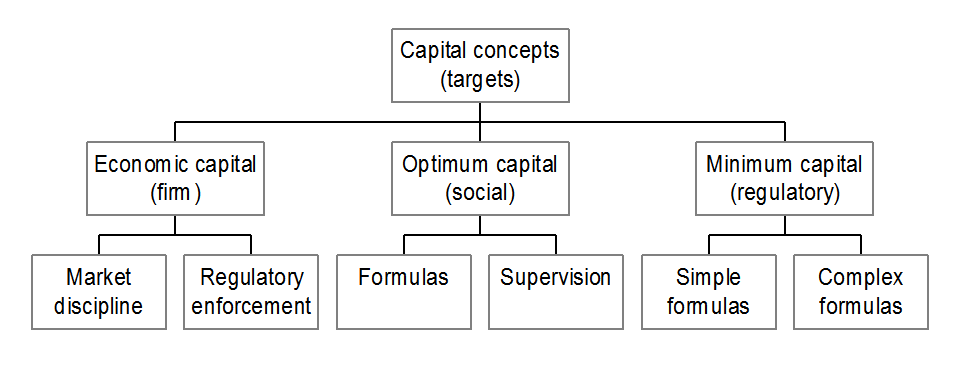
A Prolegomenon to Future Capital Requirements
Bank supervisors have made significant strides since 1980 in the area
of capital requirements, and they are currently pursuing further
refinements. This article looks beyond such developments at longer term
supervisory goals. Abstracting to some extent from the current
regulatory framework, the author attempts to delineate a set of
fundamental principles for future work on capital requirements. He
distinguishes minimum capital—an objective standard imposed by
regulators across firms—from optimum capital—a subjective standard
adopted by individual firms to cover their own risks—and shows how the
two concepts can form the basis for a general supervisory approach to
capital.
Formulas
or Supervision? Remarks on the Future of Regulatory Capital
This paper focuses on the relative emphasis that
the structure of regulatory capital places on formulas and
on supervision. The two are not viewed as mutually exclusive,
but as elements to which capital policy implicitly
assigns relative weights. We will see that in U.S. regulatory
practice, these weights have shifted over time, not
always in the same direction. Furthermore, we will explore
the relationships among regulatory formulas, supervisory
appraisals, and the prevailing business practices in the
banking industry. We then ask, what is the appropriate
mix of formulas and supervision?
Capital
Ratios as Predictors of Bank Failure
The latest updates to the globally influential Basel Accord have put the
spotlight on the ratios used to assess banks’ capital adequacy. This
article examines the effectiveness of three capital ratios—the first
based on leverage, the second on gross revenues, and the third on
risk-weighted assets—in forecasting bank failure over different time
frames. Using 1988-93 data on U.S. banks, the authors find that the
simple leverage and gross revenue ratios perform as well as the more
complex risk-weighted ratio over one- or two-year horizons. Although
the risk-weighted measures prove more accurate in predicting bank
failure over longer horizons, the simple ratios are less costly to
implement and could function as useful supplementary indicators of
capital adequacy.